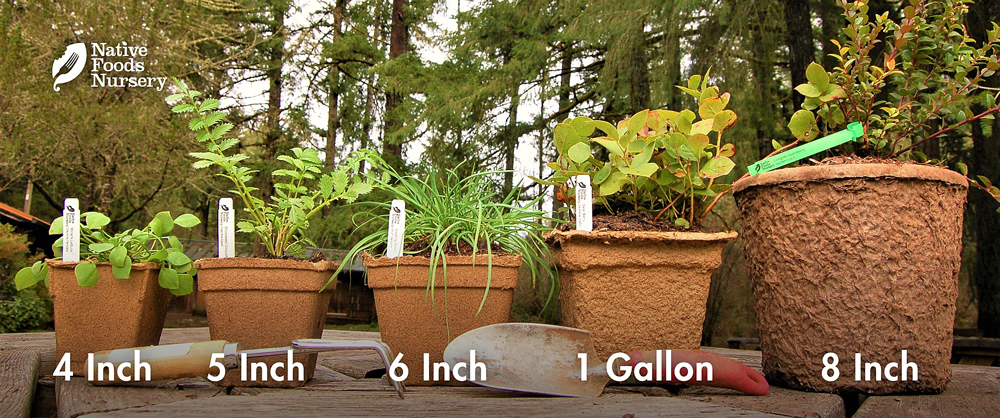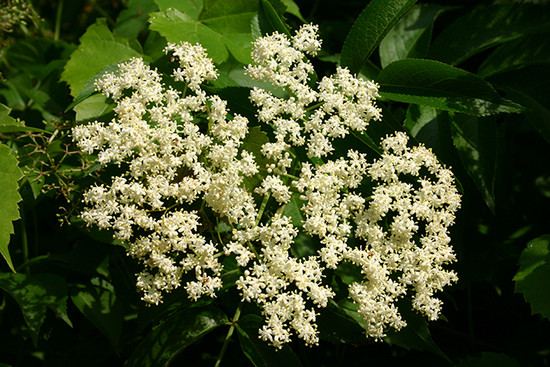Black Elderberry
- Current Stock:
- 0
- Other Names:
- American Elderberry, American Black Elderberry, Common Elderberry
- Latin Name:
- Sambucus canadensis
The American Black Elderberry is a small deciduous fruit tree bearing clusters of white blossoms followed by sweet, black fruit. We offer the wild type, as well as two select varieties bred for high yields of large and flavorful fruit - “York" and "Nova”. Both are self-fertile, but often fruit better with the other variety present.
Edible Uses
Elderberries have been an important native food and medicine source for thousands of years around the globe. The berries have a pleasing sweet-tart flavor and should be cooked before eating (except in small quantities). They are often made into elderberry wines, jams, syrups, and pies. The flowers are also edible; the entire flower cluster can be dipped in batter and fried, while petals can be eaten raw or made into a fragrant and tasty tea.
Both fruit and flowers are very nutritious and medicinal - they contain high levels of healthy polyphenols, antioxidants, vitamin C, and vitamin A. The flowers in particular contain flavonoids and rutin, which are known to improve immune function.
**CAUTION: Raw berries contain cyanide compounds that should not be consumed in large quantities. Leaves and stem are toxic.
Ornamental Qualities
Black Elderberry is an attractive fruit-bearing ornamental in the home landscape. Its graceful pointed leaves and long purple-tinted stems give way to large sprays of white blossoms in late Spring, followed by bunches of purple-black berries soon after. Butterflies are attracted to the flowers, and many species of small birds flock to the berries in late August.
Environment and Culture
The range of the American Black Elderberry is wide; it is more abundant in Eastern North America, but has made its way into Western states as well. Elderberry can adapt and thrive in many different environments. It is a vigorous grower with shallow roots and can perform well as a deciduous, edible hedge or windscreen.
Once established, it is very low-maintenance for its lifetime, making it a great plant for the lazy gardener - and if you don’t harvest its fruit, the wildlife surely will!
Native Americans used virtually every part of this special tree for either food, medicine, or materials to make tools.
Harvest, Care, and Preparation
Second-year elderberry canes with good lateral development are the most fruitful - prune to emphasize these. Harvest flower clusters from tree when in full bloom and fragrance. Clip berry clusters whole from tree when fully blue and soft, and strip from cluster for use. Once harvested, use the fruit as soon as possible or keep at a cool temperature.
Berries and flowers can be eaten raw, but are much better cooked and added to other dishes such as pancakes, fritters, pies, cobblers, or puddings. The flowers add an aromatic flavor and lightness to pancakes or fritters. Or, add sweetener and cook berries down into a syrup on the stove to be stored or used in any dish that needs a rich berry flavor. Enjoy!
- Native Range: CA, MO, WY, CO, and Eastern States
- USDA zones: 4-10
- Ease of Care: Easy - once established
- Deer Resistance: Moderate
- Light Requirements: Full Sun
- Soil Type: Any, prefers well-drained, slightly acidic
- Water Requirements: Moist
- Pollination: Self-fertile, but bigger fruiting with an additional variety as pollinator
- Bearing Age: 3 years
- Size at Maturity: 6 feet, easily pruned
- Plant Spacing: 6-10ft
- Bloom Time: Late Spring, white flower clusters
- Harvest Time: Late August
Pot Sizing Guide

Our policy lasts 30 days. If 30 days have gone by since your purchase, unfortunately we can’t offer you a refund or exchange. To be eligible for a return, your item must be unused and in the same condition that you received it. It must also be in the original packaging. Gift cards are non-refundable. Once your return is received and inspected, we will send you an email to notify you that we have received your returned item. We will also notify you of the approval or rejection of your refund. If you are approved, then your refund will be processed, and a credit will automatically be applied to your credit card or original method of payment, within a certain amount of days.










